The implants in the Footmotion Plating System range are dedicated to arthrodeses, fracture and osteotomy fixation, and revision surgeries of the foot in adults.
The implants in the Footmotion Plating System range were developed based on a simple observation: the differing biomechanical properties of each of the foot’s 16 joints create a unique need for each indication. With this in mind, Newclip Technics engineers worked closely with foot and ankle specialist surgeons to best address these anatomical and surgical challenges. As a result, implants have been designed specifically for each joint and therapeutic indication. This teamwork with renowned surgeons has allowed us to benefit from their expertise and expand this historic range over the years.
Case study : Managing a lisfranc fracture by primary arthrodesis
Our philosophy :
A plate designed for each indication and requirement.
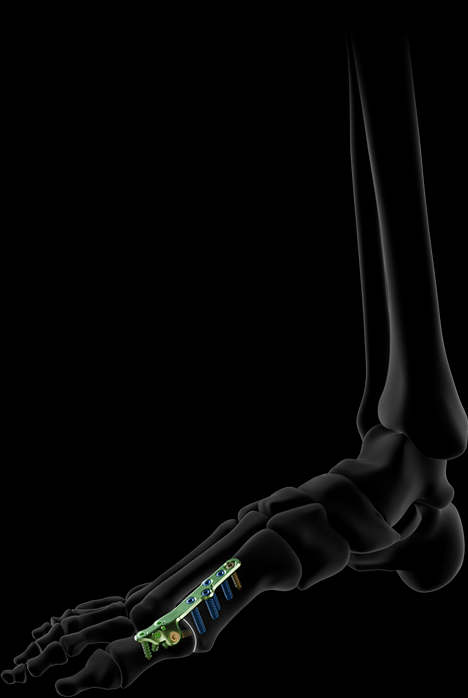
The MTP arthrodesis plate range has been designed to facilitate the surgical procedure. The medial approach provides easier access to the pegs positioned dorso-medially to the joint. The plate thickness has been optimized to minimize the risk of soft tissue irritation while ensuring mechanical strength.
The plates are designed to include a transfixing screw passing across the MTP joint. These plates also feature an oblong ramped hole to allow simple and controlled compression through the screw/plate interface.
The MTP1 plates are available in several sizes:
- 3 standard plate sizes
- 2 narrow plate sizes
- 2 revision plates
- Standard
- Narrow
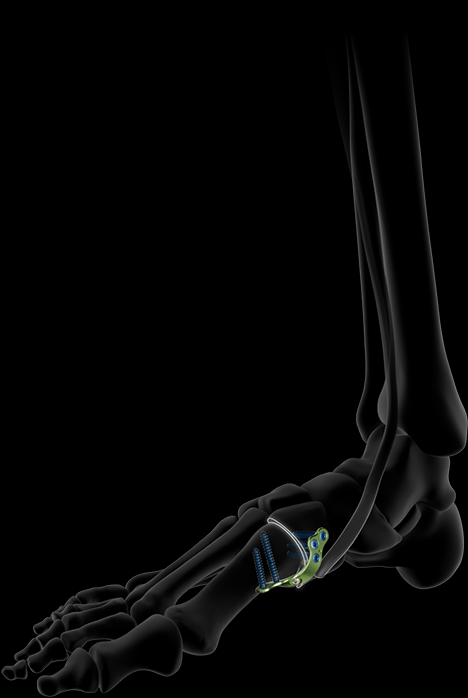
Newclip Technics offers a wide range of Lapidus arthrodesis solutions to accommodate various surgical philosophies, allowing implant placement via medial, plantar, or medio-plantar approaches.
Each type of plate is available in several sizes:
- Standard plantar plates (3 sizes)
- Narrow plantar plates (3 sizes)
- Dorsomedial plate (1 size)
- Mid-plantar plates (3 sizes), designed to respect the insertion of the anterior tibial tendon and thus minimize the risk of impingement. Their specific shape also helps reduce the extent of the surgical approach compared to a standard plantar plate.
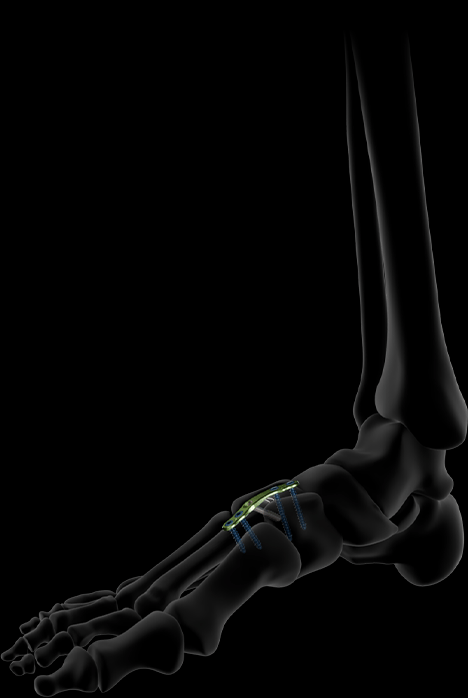
Newclip Technics offers a wide range of Lisfranc arthrodesis solutions to address different surgical configurations. The range allows for stabilization of two rays either dependently or independently:
- Dorsal Lisfranc plates: placed on two rays
- Medial Lisfranc plates dedicated to fusion of TMT-1 with TMT-2. Their frontal curvature is more pronounced compared to dorsal Lisfranc plates and thus follows the anatomical curvature of these two joints
- Isolated Lisfranc plates: these plates feature a transarticular peg allowing insertion of a recall screw from the metatarsal to the cuneiform. They are positioned on a single ray only.
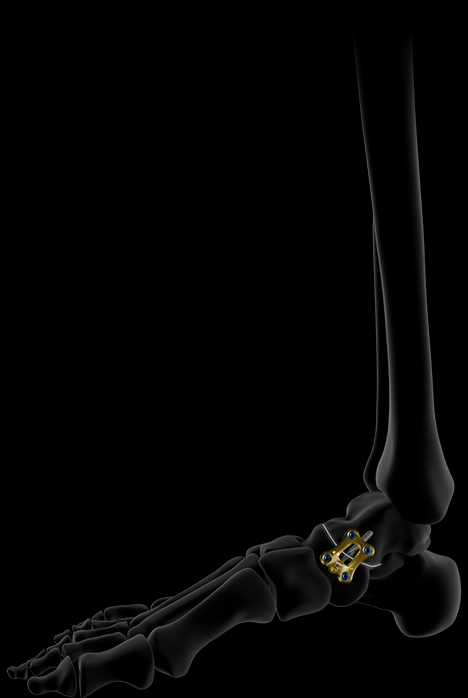
Newclip Technics has developed a complete range for talo-navicular arthrodesis with different approaches to suit patient anatomy. Each of these plates features a trans-articular peg for positioning a recall screw. Two plates have been designed to match the following approaches:
- Dorsal approach between the extensor hallucis longus and the anterior tibial tendon
- Medial approach located between the anterior tibial tendon and the posterior tibial tendon, symmetrical for left and right sides
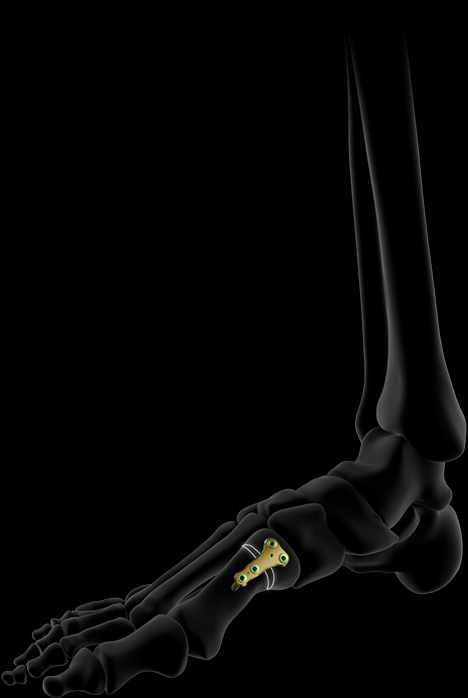
Newclip Technics has developed a complete range of 4 implants for opening osteotomy of the base of the 1st metatarsal.
All these plates have been designed to be thin enough (1.4 mm thickness) to adapt to the constraints of the area. Several plate options are offered:
- 3 plates with an integrated wedge (3 mm, 4 mm, and 5 mm) positioned on the external cortex
- 1 plate without a wedge.
A 3-in-1 instrument has also been specifically developed to perform the opening of the base osteotomy of M1. This instrument allows distraction of the osteotomy site and maintains this opening while positioning the implant, as well as applying some compression.
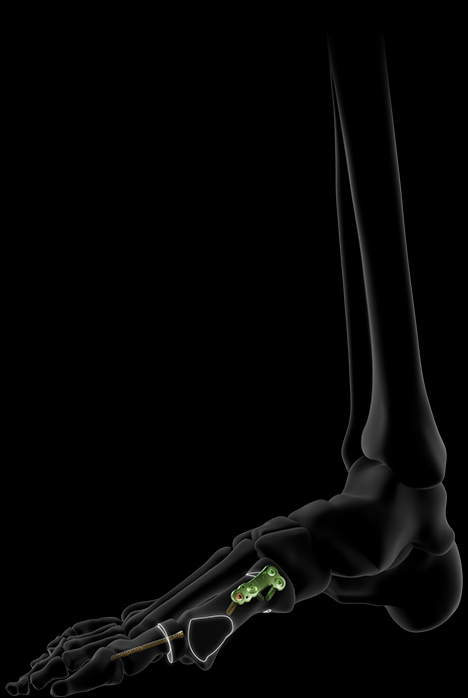
The MIBO (Mini Invasive Basal Osteotomy) plate has been specifically designed for minimally invasive basimetatarsal closing osteotomy in cases of severe Hallux Valgus.
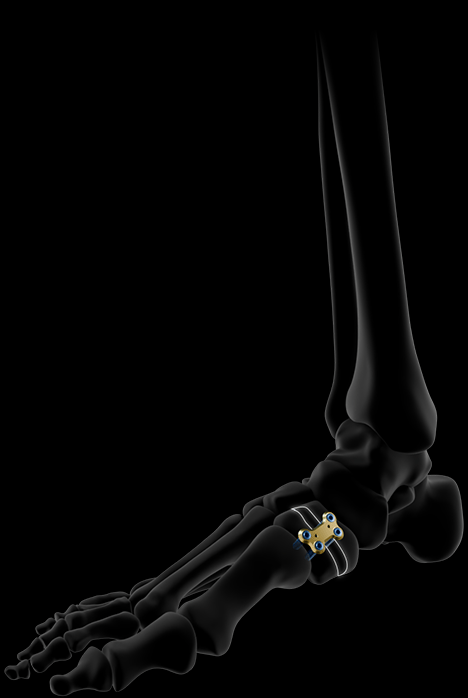
Newclip Technics offers a complete range of 4 implants for dorsomedial opening osteotomy of the first cuneiform (Cotton osteotomy), primarily used to correct a collapse of the medial arch.
Several plate options are available:
- 3 plates with an integrated wedge (4.5 mm, 5.5 mm, and 6.5 mm) positioned against the outer cortex
- 1 plate without a wedge, allowing the addition of a bone graft
A dedicated 3-in-1 ancillary instrument has also been specifically developed to perform the Cotton osteotomy opening. This instrument allows distraction of the osteotomy site and maintains the opening while positioning the implant, as well as enabling controlled compression.
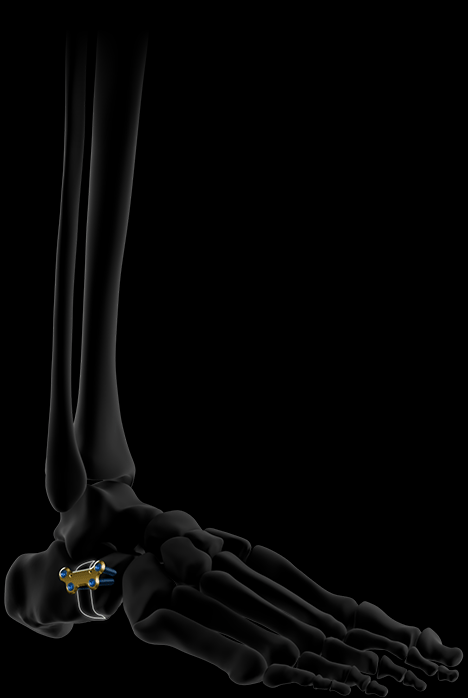
Newclip Technics offers a complete range of 4 implants for medial column lengthening osteotomy (Evans).
Several plate options are available:
- 3 plates with an integrated wedge (6 mm, 8 mm, and 10 mm) to support the lateral cortex
- 1 plate without a wedge, allowing the addition of a bone graft
A dedicated 3-in-1 instrument has also been specifically developed to perform the opening of the Evans osteotomy. This instrument allows for distraction of the osteotomy site and maintains the opening while positioning the implant, as well as applying some compression.
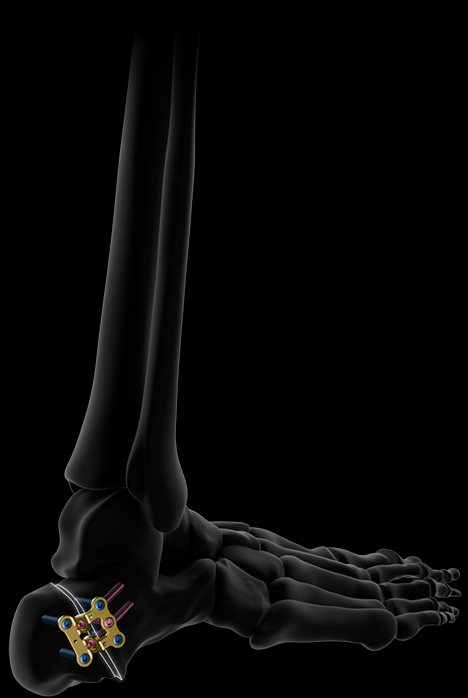
The implants for medial displacement calcaneal osteotomy (MDCO) are available with three different offsets depending on the desired correction:
- 5 mm
- 7.5 mm
- 10 mm
The surgical technique has been designed to allow for medialization without the need for additional dedicated instruments.
A central non-locking screw is used to achieve the translation. The offset determines the size of the displacement.
Additionally, two transfixing screws provide compression between the two bone fragments and stabilize the construct.
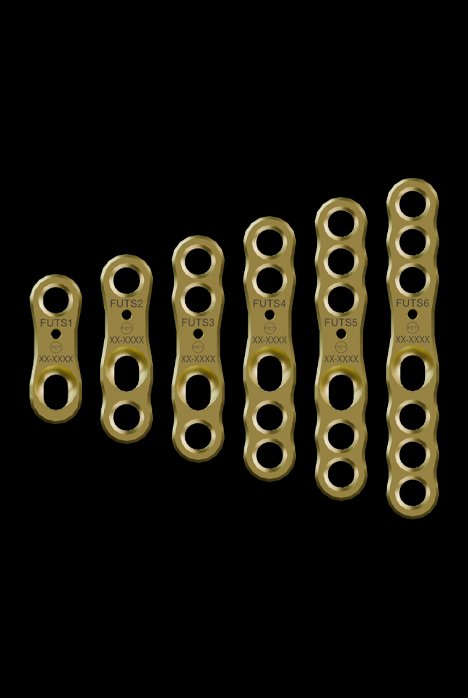
The Footmotion Plating System kit offers a wide range of compressive straight plates designed to treat fractures, osteotomies, and arthrodesis of small bones and bone fragments.
It contains 6 implants ranging from 2 holes to 7 holes.
The ramp oblong hole allows compression to be added to the construct.
The plates can be bent to adapt to the patient’s anatomy.










Key features of the Footmotion Plating System range .
- A comprehensive range of 67 implants dedicated to foot surgery as a whole
- A modular kit to meet your needs
- Two screw diameters (Ø2.8 mm and Ø3.5 mm) compatible with all implants
- Instruments designed to facilitate the surgical procedure
- Available in sterile and non-sterile versions
Our INITIAL solutions for the foot.
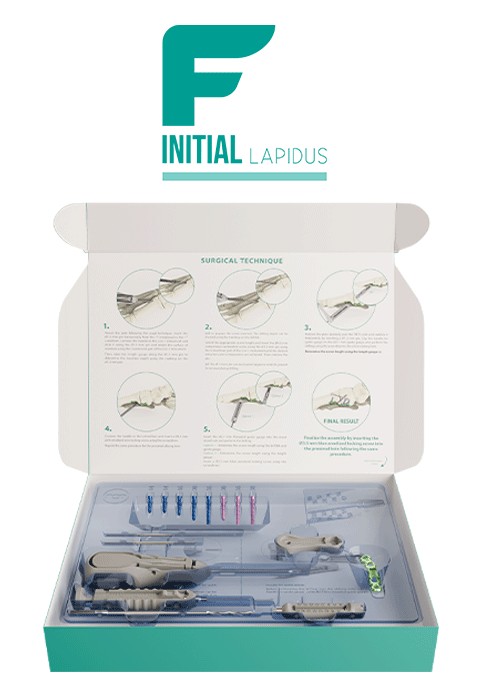
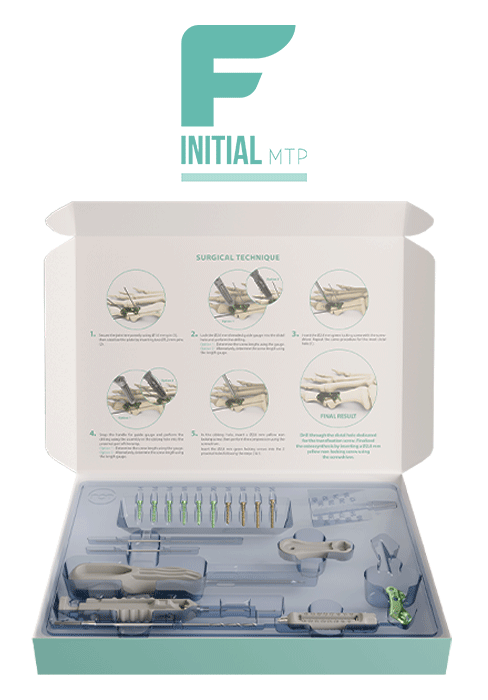
The ONE Platform.
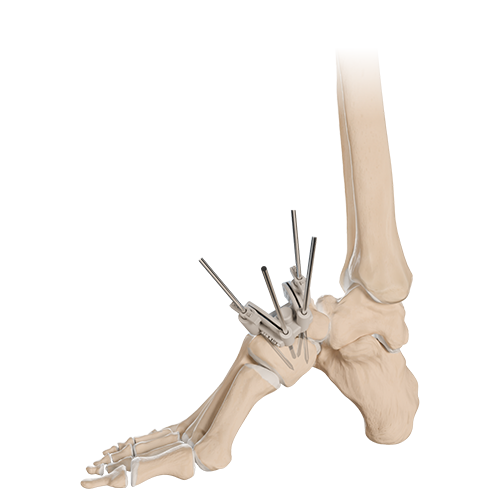
ONE is the patient-specific correction guide solution designed to assist you in the 2D and 3D planning of your surgeries, as well as in performing your osteotomies. The manufacturing of our patient-specific cutting guides is the result of close collaboration between surgeons and Newclip Technics, to best meet surgical needs and support the surgeon throughout every step. These solutions are developed based on clinical imaging data to optimize anatomical congruence between the implant and bone tissue.
Learn more